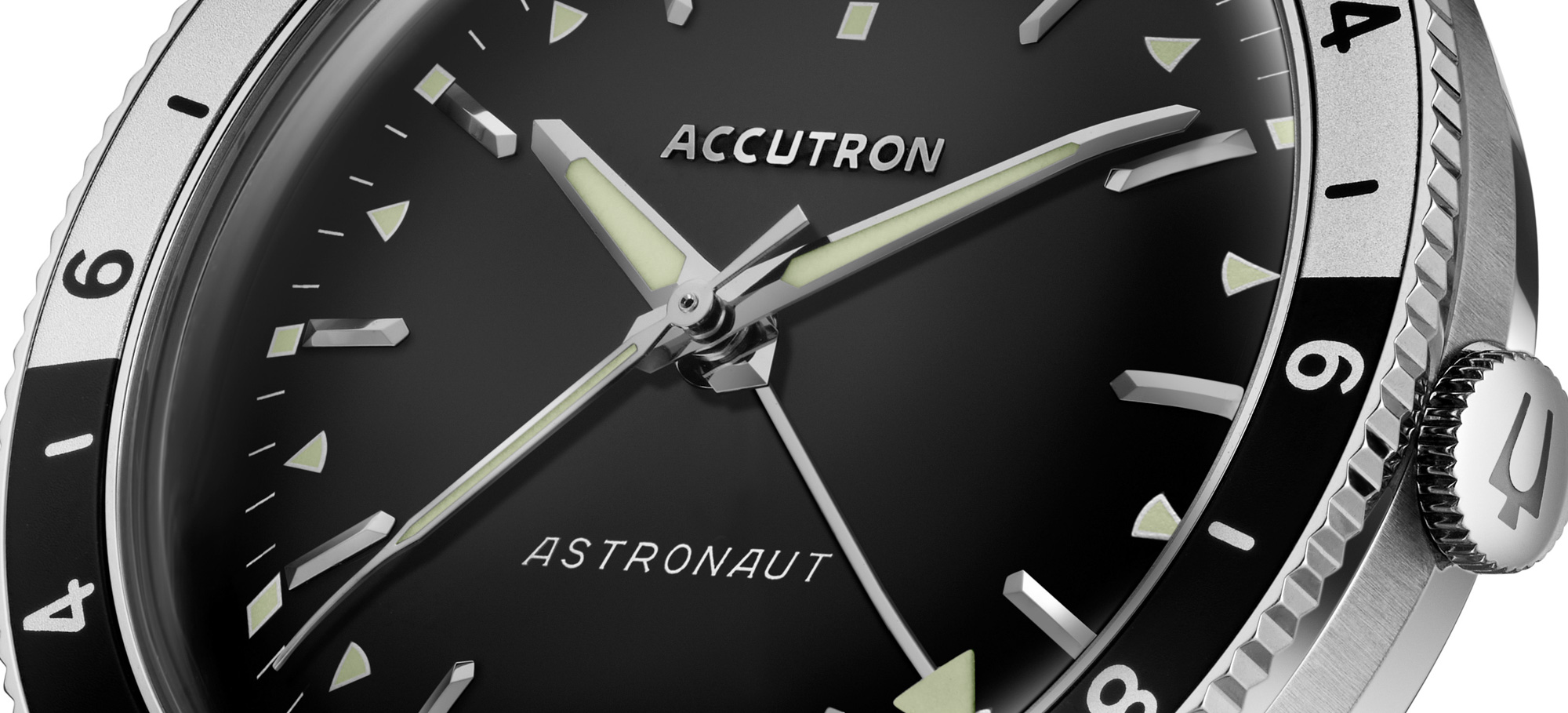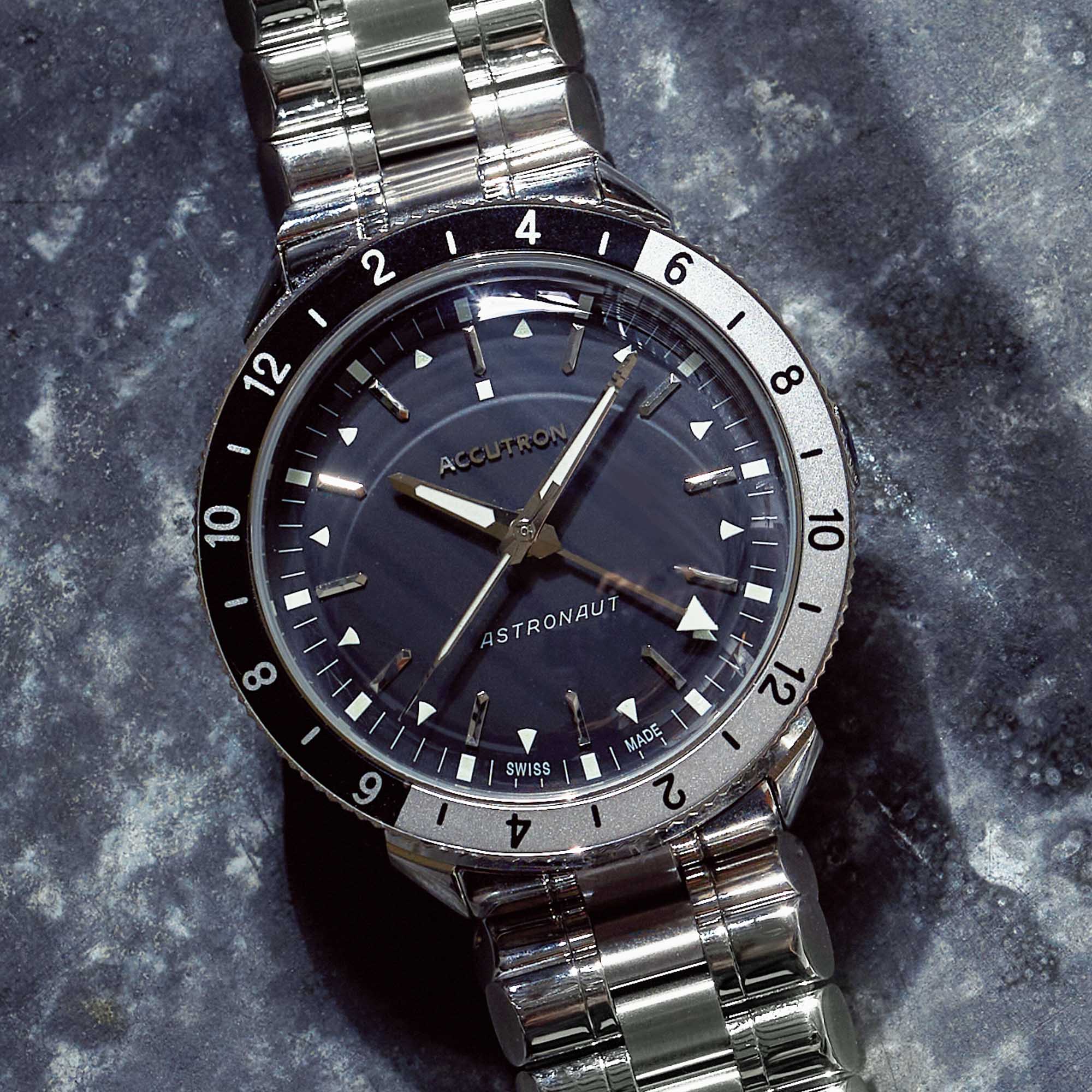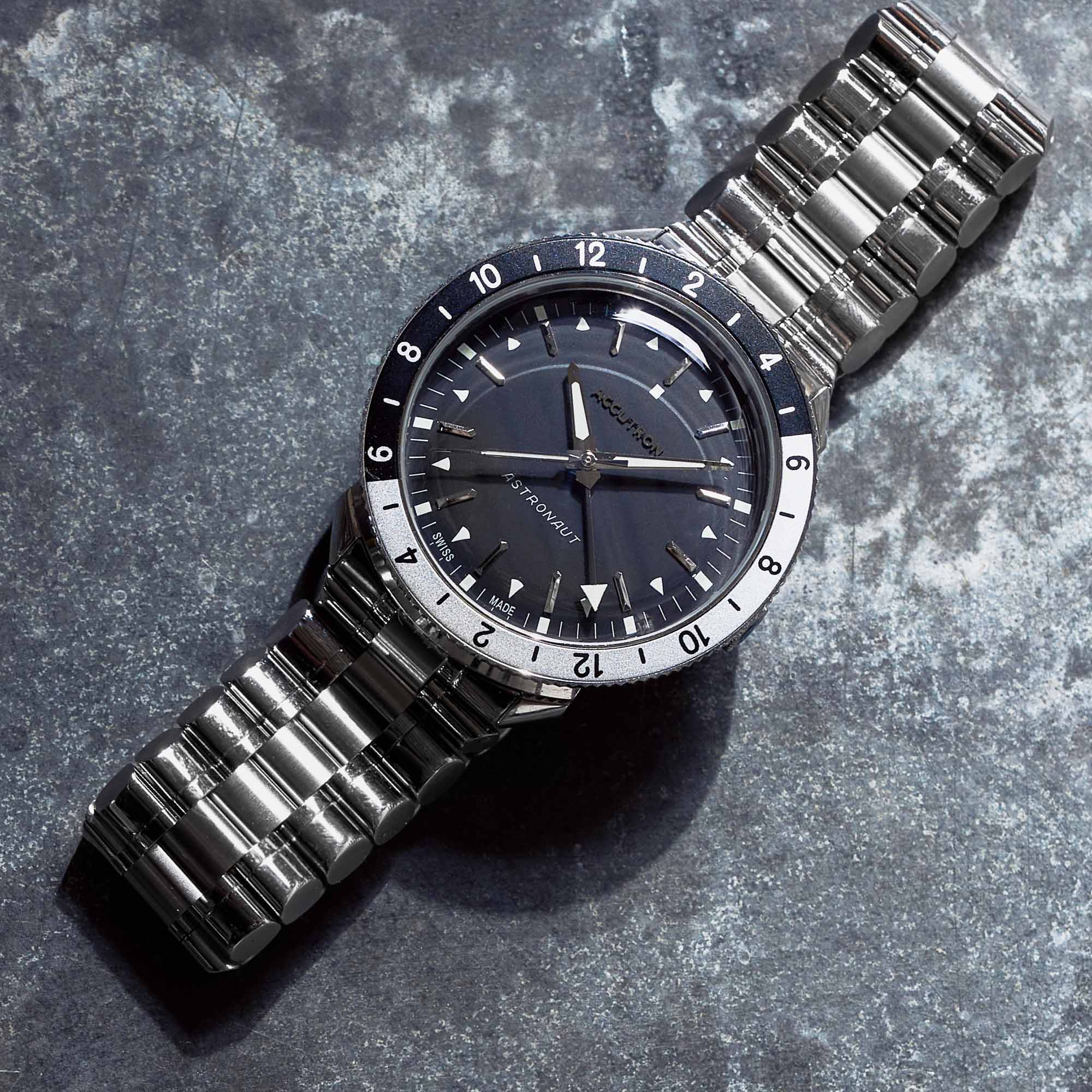
For many collectors and enthusiasts (myself included), the Accutron Astronaut will always be a favorite from Bulova’s vast archives. First introduced in 1962, the Accutron Astronaut reached outer space in May 1963 aboard the Mercury-Atlas 9 mission. This was also the watch chosen by the CIA as the official timepiece to supply to its Lockheed A-12 pilots, due to the fact that its unique tuning fork movement was better suited to contending with the extreme conditions that exist within the cockpit of the A-12 aircraft. Unlike the various other Accutron watches that were being produced at the time, the Astronaut model featured an additional 24-hour hand, along with an external rotating 24-hour bezel, which allowed it to offer GMT functionality and made it ideally suited for the pilots in the CIA’s A-12 program. As a way to celebrate the original Astronaut watch and one of the most storied vintage Bulova models of all time, Accutron has unveiled a limited edition of the 1968 “T” version of the Astronaut (the different variations are categorized by letters), which marks the first re-edition from the brand’s new series of Astronaut timepieces.
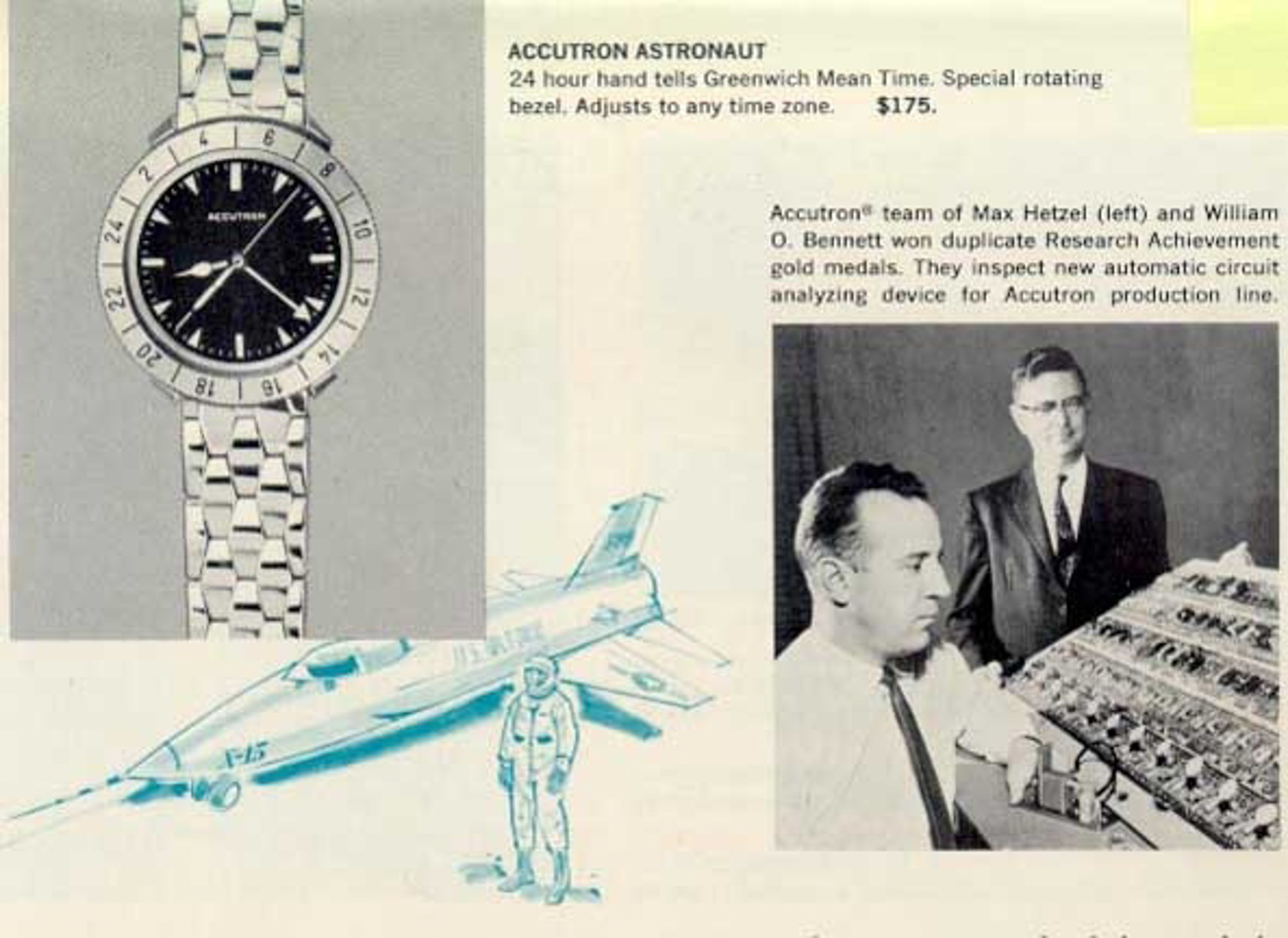
Crafted from stainless steel, the case of the new Accutron Astronaut is larger than that of its 1960s predecessor, measuring 41mm in diameter as opposed to the 38mm-wide original. Given that many people consider 38mm-wide to be a bit of a sweet spot in terms of case sizing these days, I’m sure there will be a number of folks (other than just die-hard Bulova collectors) who wish that Accutron stuck to the original dimensions of the watch. While the case still features the same round profile with short sculpted lugs, the new Accutron Astronaut now includes a small winding crown at the 3 o’clock location to access the movement, rather than having a lever that folds out from the caseback like the original Accutron watches from the 1960s. Other modern updates have been made to both the crystal and caseback, with a double box shaped sapphire crystal protecting the dial, and a caseback with a semicircular display window. The caseback appears to use a two-piece construction in order to keep the engravings and display window properly aligned, and it consists of a main center section secured by an outer screw-down ring that helps to create 100 meters of water resistance. Additionally, as this is a recreation of the “T” version of the Accutron Astronaut from 1968, the watch is fitted with split-color “Day/Night” bezel, rather than the all-black or stainless steel 24-hour bezels that can be found on most other Astronaut models. Fitted to the lugs is the watch’s signature “Bullet” bracelet that features brushed center links flanked by polished side links with an angled outer profile for a unique, yet versatile overall appearance.

While multiple different styles of dials were fitted to Accutron Astronaut watches during the 1960s, the version recreated for this new model is one of the less common varieties. It features a matte black surface that houses a unique mix of polished faceted batons, small luminous squares, and triangles for the hour markers. An applied “Accutron” emblem sits below the 12 o’clock marker, while the word “Astronaut” resides on the lower half of the dial in the same italicized font that can be found on the vintage models. Four centrally-mounted hands are responsible for displaying the time. The 12-hour hand and minute hand appear as what could best be described as an angular dauphine shape, while the 24-hour hand is a thin polished shaft with a luminous triangular tip. All four of the hands feature luminous elements, but rather than having a small luminous tip or counterweight, the seconds hand features a slightly bulbous shape that gets filled with Super-LumiNova to match the rest of the hands and hour markers.
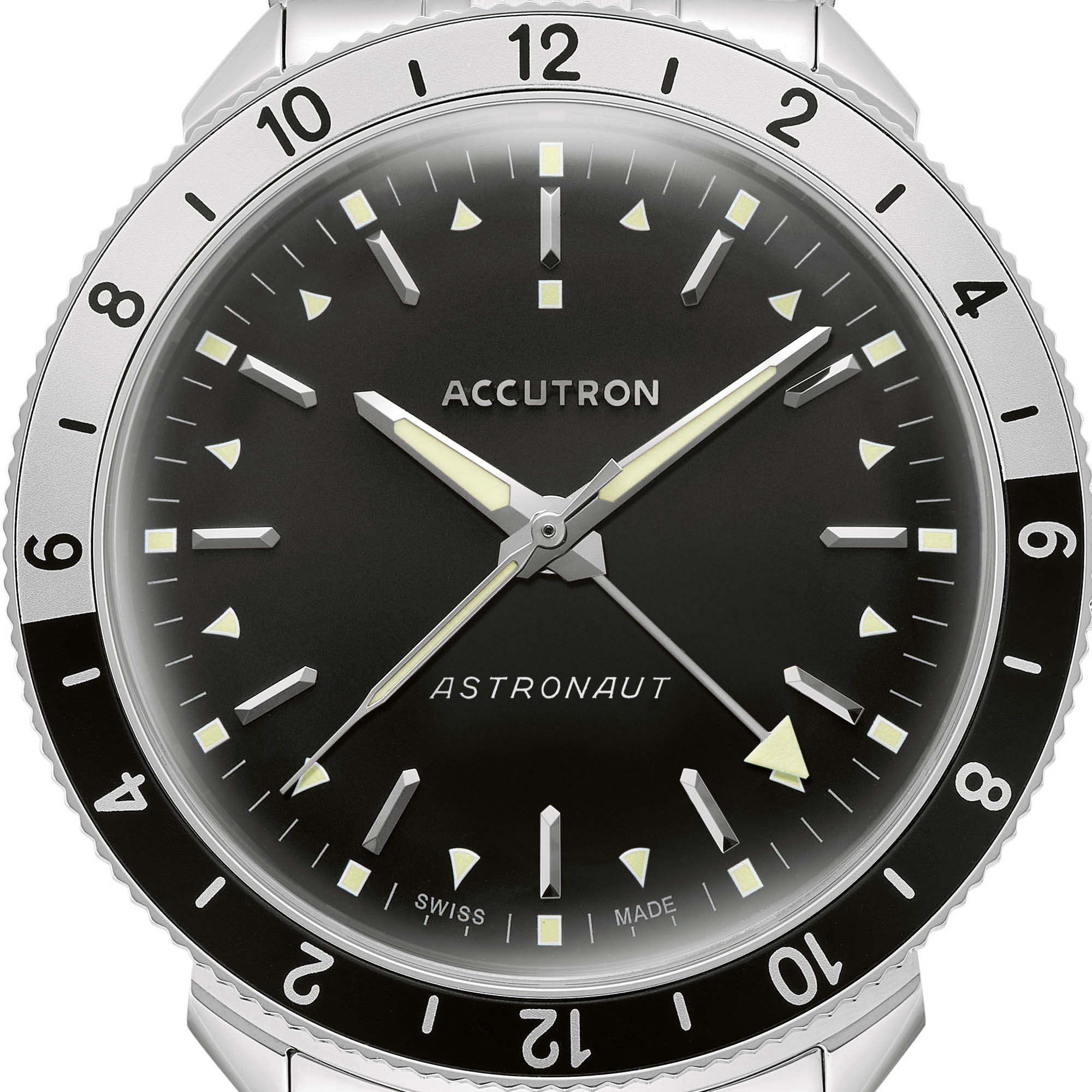
The original Astronaut watches from the 1960s were powered by the battery-operated Accutron 214 tuning fork movement, and it was specifically this state-of-the-art caliber with its ultra-high frequency and only 12 moving parts that made Accutron timepieces ideal for the challenging conditions of supersonic flight. That said, although the Accutron tuning fork movements were quite robust in actual use, they were also rather delicate and tedious to service, and the advent of quartz timekeeping technology ultimately signaled the end of the electric tuning fork platform. Consequently, the new Accutron Astronaut is powered by the fully mechanical Sellita SW330 automatic movement, which runs at a frequency of 28,800vph (4 Hz) with this variation offering a power reserve of approximately 56 hours. As the watch industry’s go-to Swiss GMT movement, the SW330 is very much a known quantity, and it offers a proven design along with the additional functionality of an independently adjustable 24-hour hand. While only a relative handful of watchmakers are properly set up to service a vintage Accutron 214 tuning fork movement, the complete opposite can be said about the SW330, and its ubiquitous design can easily be maintained by just about any competent watchmaker in the world.

The wording of the press release specifically describes this new model as “the brand’s very first re-edition in an exciting new series of Accutron Astronaut timepieces.” However, it’s important to note that this particular 1968 “T” edition will not be a permanent addition to the collection, and it will instead be produced as a limited edition of just 300 pieces with an official retail price of $3,500 USD as of press time. It’s clear that the new Astronaut revival model is aimed almost exclusively at an enthusiast audience, and if you look at what Accutron is charging for it compared to other similar offerings, the new revival model is certainly priced accordingly. Watches powered by this same movement can be found for about a third of the price, and even true vintage examples of the Accutron Astronaut can be purchased for quite a bit less in working condition (although you may not be able to track down a vintage example of this rare “T” variant). However, for the collector who loves the iconic aesthetic of the Astronaut and wants to be able to wear it in a care-free manner on a daily basis without any worries of potentially damaging an old movement that is difficult to service, the new Accutron Astronaut makes an excellent alternative, and it will be interesting to see how the collection continues to grow from here. For more information, please visit the brand’s website.

